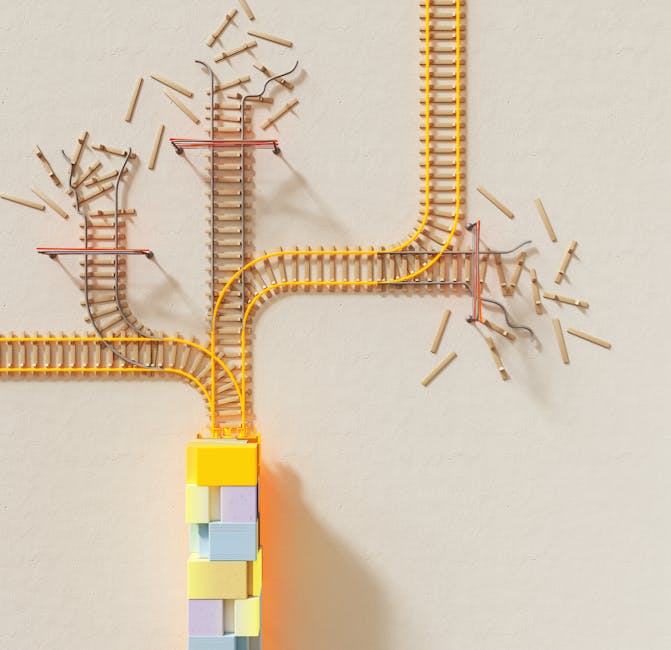Future Trends in IoT: What to Expect
As you step into the future of IoT, get ready for a world where autonomous devices think for themselves, AI-driven decision making becomes the norm, and sustainability takes centre stage in a reality where connectivity and security are the ultimate power couple. You’ll see AI-driven decision making reduce equipment failures, autonomous systems slash errors, and 5G networks facilitate seamless connectivity. And, with edge computing, data processing just got a whole lot faster. But that’s not all – the future of IoT holds even more surprises, and you’re just one step away from uncovering them.
Key Takeaways
• AI-driven decision making and autonomy will revolutionise IoT, enabling devices to think, act, and adapt independently without human intervention.• Edge computing will become crucial for real-time processing, reducing latency and bandwidth by analysing data closer to its source.• IoT devices will prioritise sustainability, focussing on eco-friendly materials, energy harvesting, and recyclability to minimise environmental impact.• Human-centric design will prioritise emotional well-being, using emotional feedback loops and affective computing to create empathetic interactions.• 5G networks will enable seamless connectivity, allowing billions of devices to communicate efficiently, and robust security measures will be essential to prevent vulnerabilities.
AI-Driven IoT Decision Making

As you wade through the sea of IoT data, AI-driven decision making swoops in to rescue you from drowning in a tidal wave of 1s and 0s. It’s like having a super-smart, data-crunching sidekick that helps you make sense of it all.
With AI-driven decision making, you can finally bid farewell to the tedious task of manually sifting through IoT data. Now, you can focus on the fun stuff – like making informed decisions that drive real results.
Take predictive maintenance, for instance. AI-driven decision making enables you to detect potential equipment failures before they happen. No more costly downtime or surprise repairs.
With intelligent automation, you can automate routine tasks, freeing up your team to tackle more strategic initiatives. It’s like having an army of robots working behind the scenes to optimise your operations.
The best part? AI-driven decision making is only getting smarter. As IoT devices continue to generate more data, AI algorithms will become even more accurate and effective.
It’s a virtuous cycle that will transform the way you do business. So, buckle up and get ready to ride the AI-driven IoT wave. Your competitors will be green with envy when they see how efficiently you’re operating.
Enhanced Cybersecurity Measures Needed

You’re only as secure as your weakest IoT device, and with millions of them online, hackers are having a field day. It’s like leaving your front door wide open, inviting thieves to waltz in and help themselves. And, let’s be real, who doesn’t luv a good heist?
But, in all seriousness, the IoT landscape is a breeding ground for cyber threats, and it’s high time we took action.
Network vulnerabilities are the Achilles’ heel of IoT security. A single weak link in the chain can bring down the entire system.
Data encryption is a must, but it’s not a silver bullet. You need to stay one step ahead of hackers, and that requires Threat Intelligence that’s on point. Knowing your enemy is vital, but it’s equally important to know your own strengths and weaknesses.
Cloud Security is another vital aspect of IoT security. With more devices moving to the cloud, it’s imperative that your cloud provider has robust security measures in place.
And, let’s not forget Access Control – who’s access to your devices and data? It’s like granting keys to your kingdom; you need to be extremely cautious about who you trust.
The bottom line is this: IoT security is a cat-and-mouse game, and you need to stay vigilant.
Enhanced cybersecurity measures are no longer a luxury, they’re a necessity. So, buckle up, IoT enthusiasts, it’s time to get serious about security!
Rise of Autonomous Systems

Autonomy is the new black in IoT, where devices are about to get a whole lot smarter – and a whole lot more independent.
You’re about to witness a revolution where devices can think, act, and adapt on their own, without human intervention. It’s like having a team of super-smart, obedient robots that can self-heal, self-optimise, and self-improve – without you lifting a finger.
Imagine a swarm of drones, working together in perfect harmony, like a well-choreographed dance.
That’s what swarm intelligence is all about – multiple devices working together, sharing data, and making collective decisions. It’s like a decentralised, autonomous network that’s faster, more efficient, and more resilient than anything we’ve seen before.
Self-healing systems, on the other hand, are the ultimate game-changers.
Imagine a system that can detect, diagnose, and fix its own problems – without downtime, without errors, and without human intervention. It’s like having a team of IT experts working for you 24/7, without the need for coffee breaks or sick leaves.
As devices become more autonomous, you can expect to see a significant reduction in errors, downtime, and maintenance costs.
It’s a brave new world, where devices are intelligent, adaptable, and autonomous – and you’re along for the ride.
Buckle up, because the future of IoT is about to get a whole lot more exciting!
Increased Focus on Sustainability

You’re probably thinking, ‘Sustainability’ is just a buzzword, but trust us, it’s about to get real in the IoT world.
The focus is shifting towards creating green IoT devices that don’t suck the life out of our planet.
From energy harvesting tech to eco-friendly practises, get ready to explore the ways IoT is going green!
Green IoT Devices
As the IoT industry’s carbon footprint continues to balloon, innovative green IoT devices are emerging as the unlikely heroes of sustainability, poised to revolutionise the way you live, work, and interact with technology.
You’re probably thinking, ‘Finally, someone’s taking responsibility for the environmental mess we’re in!’ And you’re right, someone is.
The focus has shifted towards sustainable manufacturing, and it’s about time. Eco-friendly materials are becoming the norm, and manufacturers are scrambling to reduce waste and energy consumption.
No more toxic chemicals, no more e-waste, no more guilt trips to the recycling bin. Green IoT devices are designed to be energy-efficient, recyclable, and biodegradable.
It’s a welcome relief, literally. You’ll soon be surrounded by devices that not only make your life easier but also help reduce the planet’s carbon footprint.
Energy Harvesting Tech
Five years from now, your IoT devices will be powered by ambient energy, courtesy of advanced energy harvesting tech that’s about to change the game – and the planet’s fate. You’ll no longer need to worry about battery life or recharging your devices. Energy harvesting tech will capture and convert ambient energy from the environment, making your devices self-sustaining.
Wireless charging will become the norm, making it easy to keep your devices powered up. No more tangled cords or lost charging cables.
Thermoelectric conversion will allow your devices to harness heat energy from their surroundings, converting it into useable electricity.
Vibration-based energy harvesting will enable devices to be powered by even the slightest vibrations, making it possible to power devices in environments where traditional energy sources are scarce.
With energy harvesting tech, the possibilities are endless. You’ll be able to deploy IoT devices in remote or hard-to-reach areas, knowing they’ll be powered indefinitely. It’s a game-changer for IoT, and for the planet.
Eco-Friendly Practises
By 2025, it’s estimated that IoT devices will produce a staggering 79 zettabytes of CO2 emissions, which is roughly equivalent to the annual carbon footprint of the entire airline industry – a reality cheque that’s prompting a sea change in eco-friendly practises.
As you venture into the world of IoT, you’ll notice a growing emphasis on sustainability. It’s about time, right? The focus is shifting from just making cool gadgets to making gadgets that don’t harm the planet. You can expect to see more companies adopting carbon offsetting, where they invest in renewable energy projects to balance out their emissions. It’s not a free pass, but it’s a step in the right direction.
| Eco-Friendly Practises | Benefits |
|---|---|
| Sustainable materials | Reduces e-waste, conserves resources |
| Carbon offsetting | Compensates for emissions, supports renewables |
| Energy-efficient designs | Lowers power consumption, reduces emissions |
| Recycling programmes | Closes the loop, reduces waste |
You’ll also see a rise in sustainable materials, energy-efficient designs, and recycling programmes. It’s time to get real about the environmental impact of IoT. The future is looking greener, and that’s something to get excited about!
Edge Computing Takes Centre Stage

Your devices are generating a staggering amount of data, and edge computing is about to become your new BFF in handling it all efficiently. You’re probably thinking, ‘What’s the big deal about data?’ Well, let me tell you – it’s a lot. Like, a LOT a lot. And that’s where edge computing comes in, taking the pressure off your cloud storage and processing power.
Edge computing is about to change the IoT game in three significant ways:
Real-time processing: With edge computing, you can analyse and respond to data in real-time, no lag or delay. It’s like having a superpower, minus the cape (but let’s be real, who wouldn’t want a cape?).
Decentralised architectures: Edge computing lets you process data closer to where it’s generated, reducing latency and increasing efficiency. It’s like having a team of tiny, efficient robots working for you, minus the robot uprising (we hope).
Reduced latency and bandwidth: By processing data locally, you reduce the amount of data being sent to the cloud, resulting in faster processing times and lower bandwidth usage. It’s like having a magic wand that makes your IoT devices faster and more efficient, minus the wand (but hey, that would be cool too).
In short, edge computing is the answer to your IoT data prayers. It’s the solution to your processing woes, the hero your devices need to function at their best. So, buckle up and get ready for the edge computing revolution!
5G Networks Unlock New Possibilities

Now that you’ve got your data in cheque with edge computing, it’s time to talk about the pipes that’ll carry all that processed info – enter the G networks, the game-changing wireless technology that’s about to supercharge your IoT experience.
You’re probably thinking, ‘What’s the big deal about G networks?’ Well, let me tell you – they’re about to revolutionise the way your devices communicate with each other.
With G networks, you can say goodby to spotty connectivity and hello to Massive Connectivity. We’re talking billions of devices, all chatting with each other seamlessly. It’s like one big, happy IoT family.
And the best part? These networks are designed to provide Seamless Interoperability, so you won’t have to worry about compatibility issues anymore. Your devices will play nice, no matter who made them.
But here’s the thing: G networks aren’t just about more devices – they’re about faster, more reliable connexions.
Imagine a world where your smart home devices can communicate with each other in real-time, or where your self-driving car can talk to the traffic lights to avoid congestion.
It’s a brave new world, and G networks are the key to accessing it. So, buckle up, because the future of IoT just got a whole lot more interesting.
Human-Centric IoT Design Principles

You’re about to enter the era of IoT that actually gets you – yes, it’s possible!
Human-centric design principles are all about crafting an emotional experience that’s tailored to your quirks and habits.
It’s time to explore how emotional experience design and personalised IoT interactions will transform the way you live, work, and play.
Emotional Experience Design
As IoT devices increasingly become an integral part of our daily lives, can we really afford to ignore the emotional connexion we form with these devices, and the experiences they provide?
You’ve probably experienced it – the frustration when your smart speaker doesn’t understand your voice command, or the excitement when your smart home system learns your daily routine. These emotions are real, and they’re shaping our relationships with IoT devices.
Emotional Experience Design is about acknowledging and leveraging these emotions to create a more human-centric approach to IoT design.
-
Mood sensing: IoT devices that can detect and respond to your emotions, creating a more empathetic interaction.
-
Affective computing: Using AI to analyse and understand human emotions, enabling devices to adapt to your emotional state.
-
Emotional feedback loops: Designing devices that provide emotional feedback, such as a smart home system that adjusts lighting and temperature based on your mood.
Personalised IoT Interactions
By acknowledging your emotional responses to IoT devices, designers can focus on crafting personalised interactions that make your life easier, and a whole lot more enjoyable. It’s time to say goodby to generic, one-size-fits-all experiences and hello to tailored interactions that understand your quirks and habits.
| Personalised IoT Interactions | Benefits |
|---|---|
| Contextual suggestions | Receive relevant recommendations based on your location, time, and activities |
| Behavioural monitoring | Get personalised insights into your daily habits and routines |
| Emotion-aware interfaces | Interact with devices that understand your emotions and respond accordingly |
| Adaptive learning | Devices learn your preferences and adapt to your changing needs |
| Human-centred design | IoT devices designed with your emotional well-being in mind |
With personalised IoT interactions, you’ll no longer feel like just another user. Your devices will learn to understand your emotional responses, providing contextual suggestions and behavioural monitoring to make your life more efficient and enjoyable. It’s time to experience the future of IoT, where devices are designed with your emotional well-being in mind.
Conclusion
You’re probably thinking, ‘AI-driven decision making? Autonomous systems? Sounds like the IoT is getting too smart for its own good.’
But the future of IoT isn’t about robots taking over (unless you count your smart thermostat, and let’s be real, it’s already in charge).
It’s about harnessing the power of tech to make our lives easier, more sustainable, and more human-centric.
So, buckle up – the IoT revolution is just getting started, and you’re along for the ride.
Contact us to discuss our services now!
